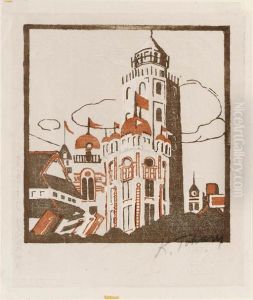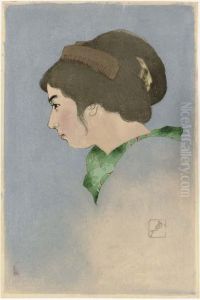Tobari Kogan Paintings
Tobari Kogan was a prominent Japanese artist, known for his significant contributions to the development of modern Japanese art in the early 20th century. Born in Tokyo in 1882, Kogan was part of a generation of artists that sought to modernize Japanese art by incorporating Western techniques and perspectives, while also deeply valuing and preserving the essence of traditional Japanese aesthetics. His work encompasses a variety of mediums, including painting, printmaking, and illustration, showcasing his versatility and creative exploration across different art forms.
Kogan's artistic journey began at a young age, influenced by the cultural and artistic environment of Tokyo, a city undergoing rapid modernization during the Meiji and Taisho periods. He initially studied traditional Japanese painting (Nihonga) but was also exposed to Western art styles, which were becoming increasingly popular in Japan at the time. This dual exposure allowed him to develop a unique style that blended the delicate sensibilities of Japanese traditional art with the boldness and innovation of Western movements such as Impressionism and Post-Impressionism.
Throughout his career, Tobari Kogan was deeply involved in the artistic movements of his time, participating in various art societies and exhibitions that aimed to challenge and expand the boundaries of contemporary Japanese art. He was particularly interested in the mingei movement, which celebrated the beauty of functional, everyday objects and the preservation of traditional crafts, a philosophy that resonated with his own artistic values.
Despite his early death in 1927 at the age of 45, Kogan left behind a significant legacy. His work not only reflects the dynamic cultural shifts occurring in Japan during his lifetime but also continues to inspire subsequent generations of artists who seek to bridge the gap between tradition and modernity. Kogan's art is characterized by its emotional depth, technical proficiency, and a profound respect for both the past and the present, making him a pivotal figure in the history of modern Japanese art.

